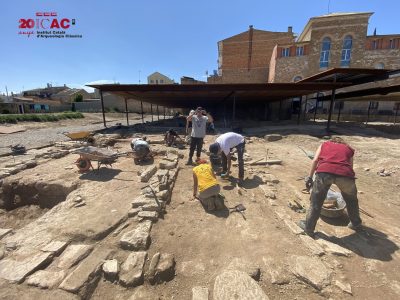
On July 14th, the 17th edition of the Roman City of Iesso Archaeology Course in Guissona concluded.
The Roman City of Iesso Archaeology Course brought together students, researchers, and professionals in its 17th edition, combining educational and research components linked to the Iesso research project.
Núria Romaní (UAB) is the leading researcher of the Iesso project (four-year project CLT009/22/00039), along with Josep Guitart (UAB-ICAC).
Have a look at the following video, where Núria provides details about the 2023 campaign, which focused mainly on two sectors of the Roman City of Iesso: one area situated at the intersection of two streets (between a cardo and a decumanus), and, as it happened a few years ago, the thermal baths area. This year, a couple of rooms adjacent to the thermal building were added, although it is yet to be determined whether they are part of these baths or located in an external area.
A group of 13 students took part in the 17th edition of the Guissona Archaeology Course. Most of them were undergraduate students from the UAB (Autonomous University of Barcelona), but there were also three students from the University of Castilla la Mancha, one student from the University of Navarra, and one high school student from Vilafranca del Penedès.
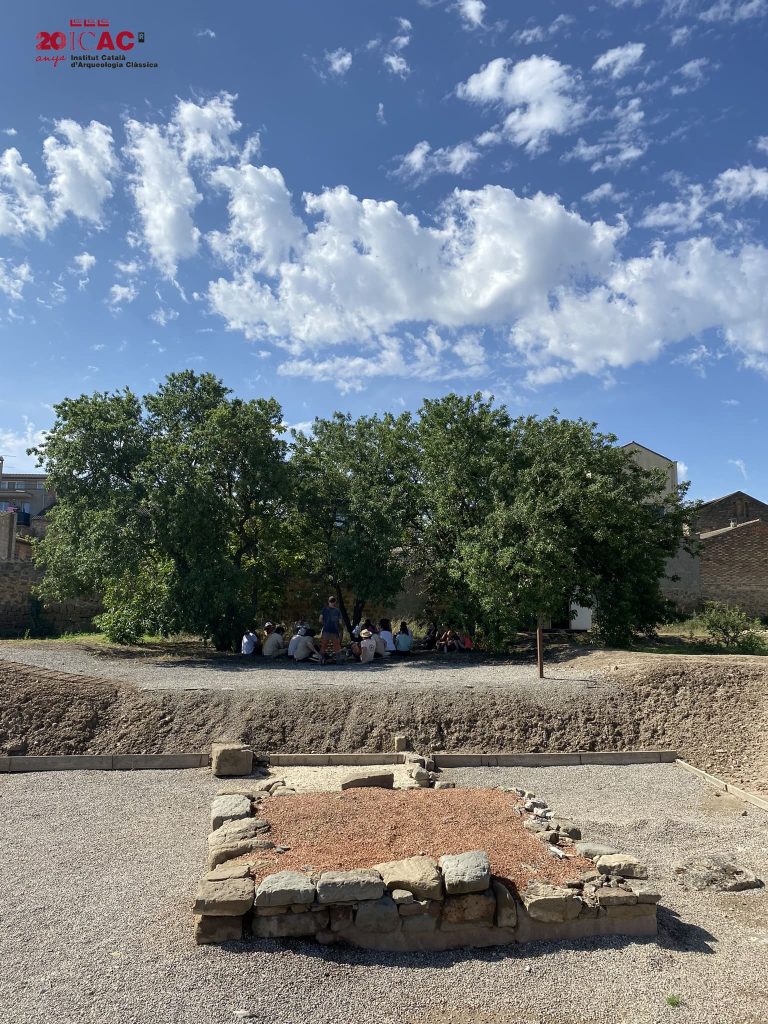
As the most exceptional element, a well has also been excavated in a domestic area of a large domus, which will be highly interesting because it will provide information about elements that are not typically preserved in land excavations, primarily organic materials such as wood, seeds, and other elements that will reveal a lot about daily life in ancient Iesso.
A significant amount of new material has been extracted from a well located within the manor house, which was fully excavated last week, reaching a depth of up to seven meters.
What is so special about this well? In the words of Patxi and Eric, from the company Arqueolegs.cat, “The well is filled with soil and water, or what we call mud”. This composition contributes to the preservation of many organic materials that cannot be identified in other contexts. It’s worth noting that the extraction of these materials is quite challenging. In the following image, you can appreciate the complex infrastructure that had to be prepared to ensure the safety of the archaeologists.
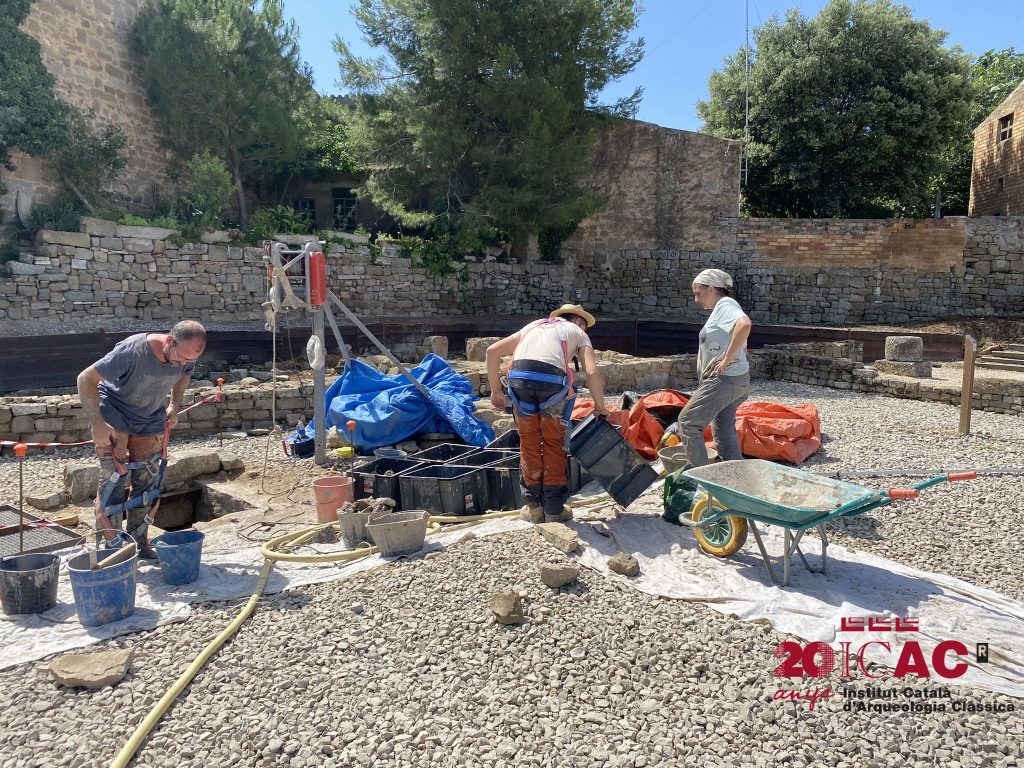
Theoni Baniou, GIAP PhD researcher, Theoni Baniou, has been responsible for filtering and cleaning the baskets brought from the well, using the technique known as “wet sieving”, in order to identify these remains (charcoal, bones, seeds, etc.) and study them later in the ICAC laboratory, as part of her doctoral thesis Exploring Roman tastes: an archaeobotanical and network analysis approach to the investigation of food plant access, commerce, and social identities, which she is conducting with a scholarship from ICAC (CIN21).
This screening technique is highly effective for identifying very small remains that go unnoticed by the naked eye. In fact, during the excavation, sieves of different gauges (5 mm, 1 mm, and 0.2 mm) were used, allowing the recovery of materials as tiny as seeds, pottery, snail shells, animal bones, and charcoal.
To ensure the preservation of the recovered materials, after the screening, the archaeologists stored them in bags filled with deionized water to maintain an atmosphere similar to what they had when they were in the well. If they didn’t do this, the remains wouldn’t arrive intact at the laboratory, leading to the loss of a vast amount of data.
So far, the proposed chronology for these remains is Roman, extending up to the 5th century AD, which brings a new chronological horizon to the archaeological site!
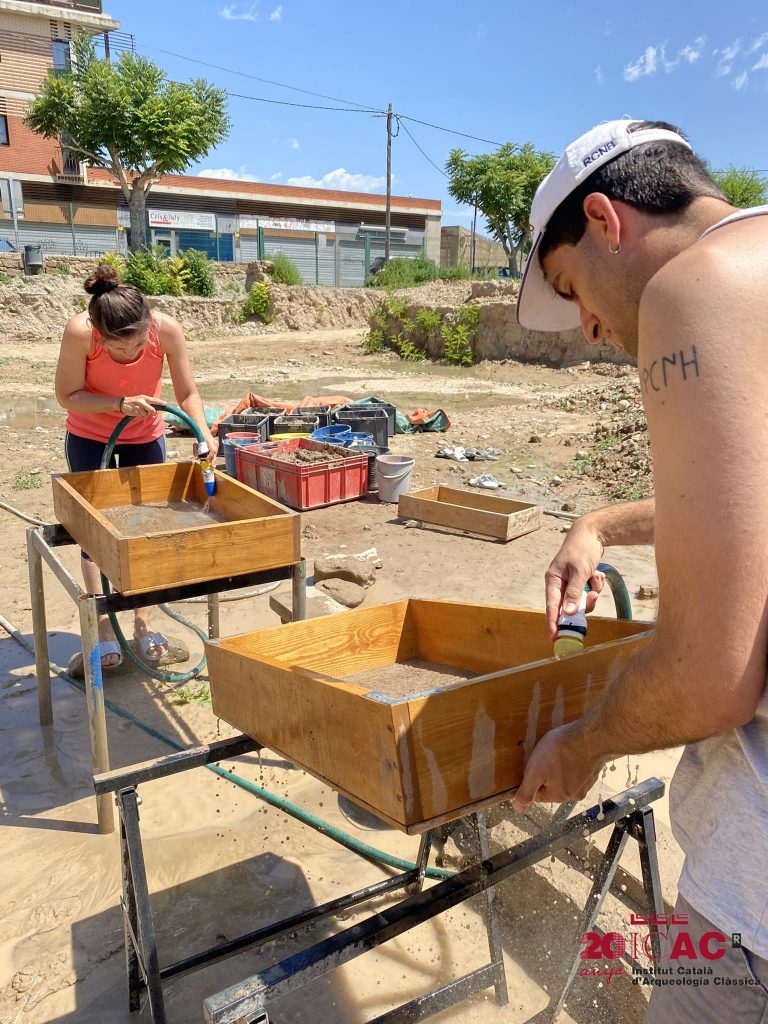
David Castellana, director of the Guissona Museum, highlights the archaeological significance of wells, particularly the one in Guissona because it has never completely dried up. As a result, the materials discarded by the inhabitants of that time have been preserved in the sediments for 2,000 years. This has allowed the preservation of organic matter that would have otherwise disappeared in a different archaeological context.
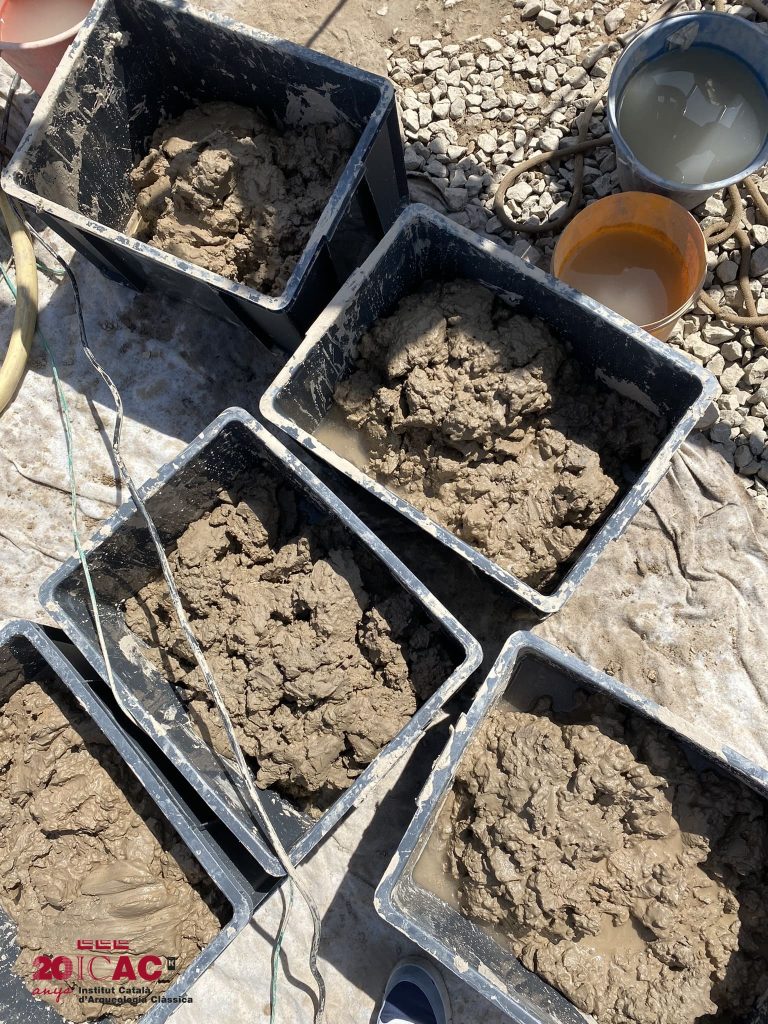
Within the framework of the Guissona Archaeology Course, Theoni Baniou gave a talk to the students involved in the 17th edition. With her presentation, entitled Reconstructing the diet and foodways of Roman Iesso, the students were able to learn in more detail about the habits and food culture of the Romans who inhabited the city of Iesso, thanks to the study of the archaeobotanical evidence found at the site.
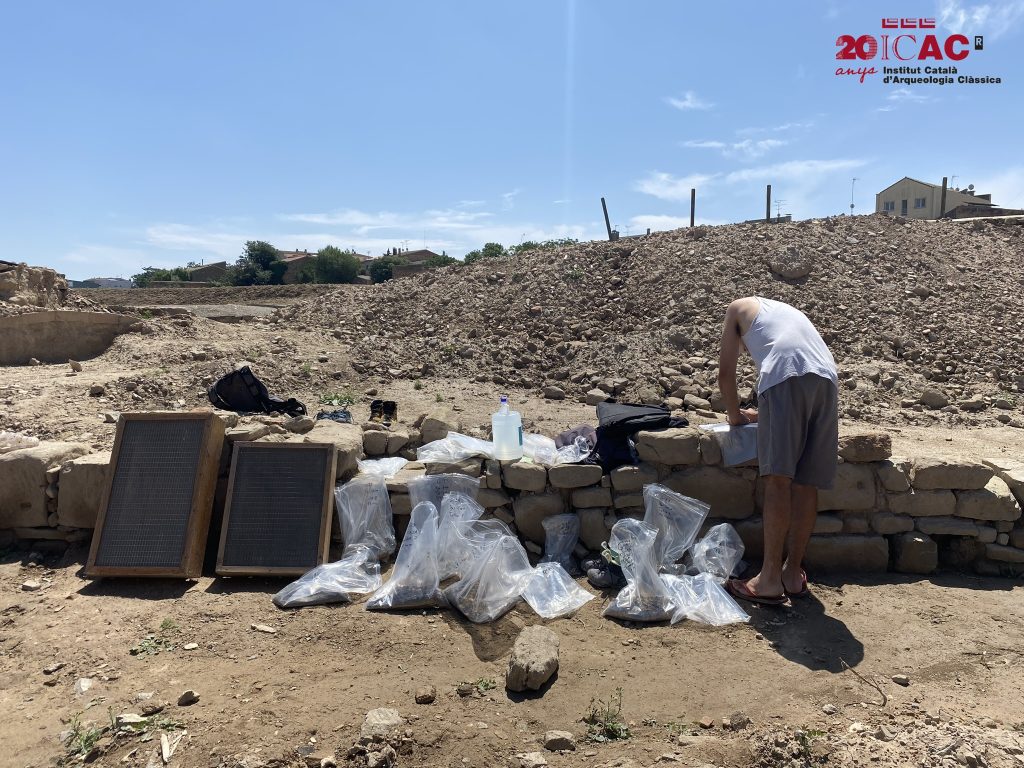
En diciembre de 2022, llegaron al ICAC las primeras muestras extraídas de la campaña de verano de Guissona de 2022. Núria Romaní (UAB) y David Castellana (Museo de Guissona) visitaron personalmente el instituto y las muestras quedaron bajo la tutela de la Dra. Alexandra Livarda, codirectora del equipo de Bioarqueología (arqueozoología y arqueobotánica) del grupo GIAP del ICAC, y directora de tesis de Theoni Bainou.
In December 2022, the first samples extracted from the summer campaign in Guissona 2022 arrived at ICAC. Núria Romaní (UAB) and David Castellana (director of the Guissona Museum) personally visited the Institute, and the samples were placed under the supervision of Dr. Alexandra Livarda, co-director of the Bioarchaeology (Archaeozoology and Archaeobotany) team within the GIAP group at ICAC, and also the thesis advisor of Theoni Baniou.
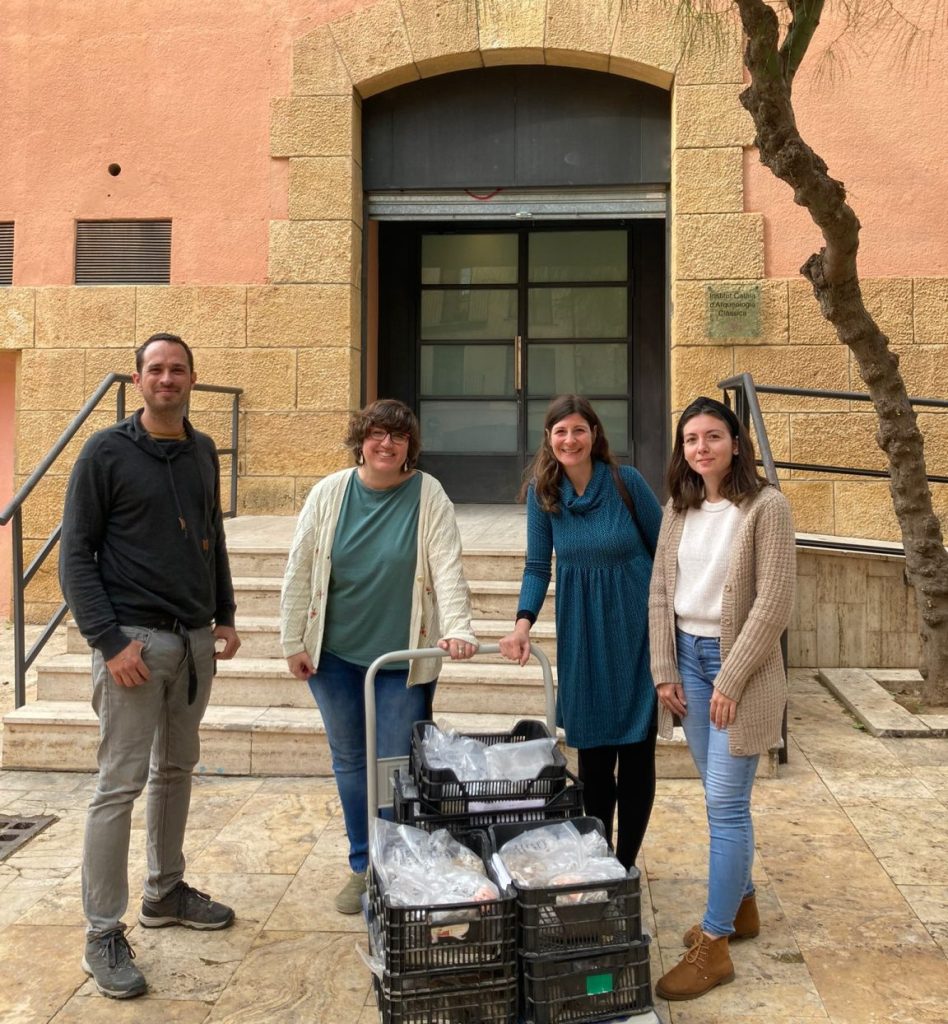
The four-year project Transformacions urbanístiques, dinàmiques constructives i vida urbana a la ciutat romana de Iesso (Guissona, Segarra) is funded by the Department of Culture of the Generalitat de Catalunya (CLT009/22/00039) and the City Council of Guissona.


Related news:
The ICAC takes part in the constitution of the new Advisory Council of Archaeology of Guissona
A sample of the Roman City of Iesso, on display in the exhibition «Toquem Fusta!»
Stories from the wells: how the Roman wells of Guissona can shed new light on life in the past





